What type of art was created during the Pop Art movement?
Print art, paintings, photo manipulation and even exhibition installations were produced during the Pop Art movement.
Pop Art was created and popular during which years?
Pop Art was popular in the 1950s and 1960s, even spanning to the 80s. Even to this day, many graphic design and digital art styles are inspired by the Pop Art aesthetic.
Where was Pop Art made and popularised?
The Pop Art movement began in America, the United Kingdom and eventually became famous all around the world.
Who are some famous Pop Art artists and artworks?
Campbell’s Soup Cans by Andy Warhol
Crying Girl by Roy Lichtenstein
Radiant Baby by Keith Haring
Interesting observations about Pop Art – Art Op-Ed
Artwork that was “noticeable” was the crux of Pop Art. This was the era where portraits of old royals painted in earthy tones were a thing of the past. With the popularity of coloured television, colour print ads, magazines and colour photographs, viewers perhaps needed more stimuli to remember a particular artwork. This is where artists like Andy Warhol successfully delivered. The use of silkscreen printing, stamps with vivid inks and subjects taken straight from the commercial space, Warhol pioneered the Pop Art movement.
Which art movement(s) came before the Pop Art movement?
Many post-modern, avant-garde and contemporary styles like abstract expressionism and constructivism have inspired the Pop Art movement.
Which art movement(s) came after the Pop Art movement?
The Op Art movement came after the Pop Art movement.
Top 10 Artworks of the Pop Art Movement:
Campbell’s Soup Cans by Andy Warhol: Soup Cans and Artistic Rebellion
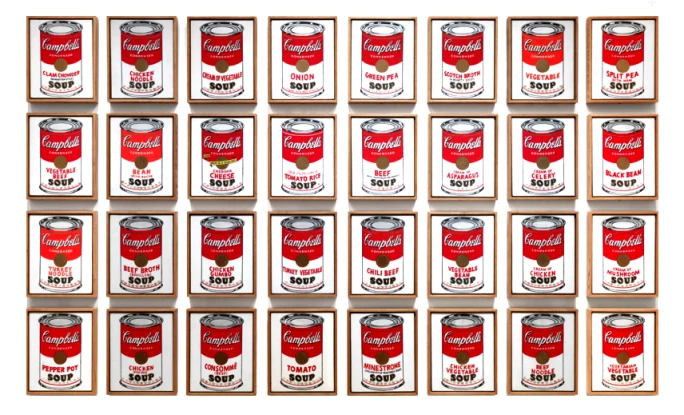
Andy Warhol’s “Campbell’s Soup Cans” emerged as a revolutionary statement within the art world. Reports suggest that Warhol was drawn to the mundanity of consumer products, seeking to elevate the every day to the realm of art. The decision to paint 32 canvases, each representing a different soup flavour, was a deliberate nod to mass production and the ubiquity of consumer culture. “Campbell’s Soup Cans” not only marked the birth of pop art but also challenged traditional notions of artistic subject matter.
Marilyn Diptych by Andy Warhol: The Glamour and Tragedy of Marilyn Monroe
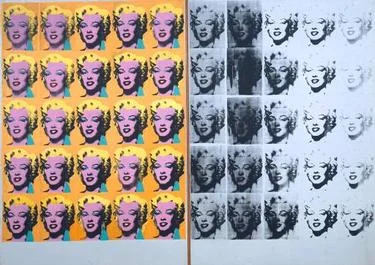
“Marilyn Diptych” is a poignant reflection on the life and death of Marilyn Monroe. Warhol was captivated by Monroe’s celebrity and the duality of her public and private personas. The repetition of Monroe’s image reflects the relentless nature of fame and the fleeting nature of life. The gradual fade-out in the diptych symbolises Monroe’s tragic end. Warhol’s treatment of Monroe’s image transformed her into an enduring symbol of both glamour and vulnerability.
Crying Girl by Roy Lichtenstein: Comics on Canvas
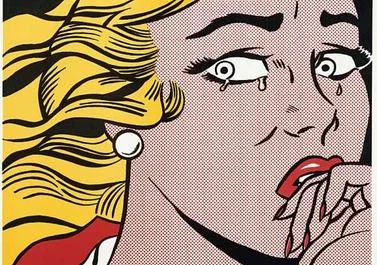
Roy Lichtenstein’s “Crying Girl” is a vivid example of how pop art drew inspiration from popular culture, particularly comic books. Lichtenstein was intrigued by the emotional intensity depicted in comics and sought to translate it onto canvas. The use of bold, Ben-Day dots and the melodramatic portrayal of a tearful woman playfully blur the line between high and low art. “Crying Girl” not only pays homage to the comic book aesthetic but also challenges the conventions of traditional artistic expression.
Flag by Jasper Johns: A Symbolic Tapestry of Patriotism
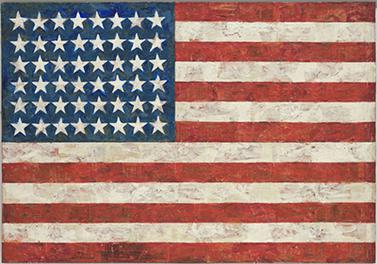
Jasper Johns’s “Flag” is a quintessential example of pop art’s fascination with everyday symbols. It is said that Johns was drawn to the American flag as an emblem of national identity. This unique rendering of the flag challenges viewers to reexamine familiar symbols. “Flag” becomes a layered exploration of patriotism, identity, and the transformative power of art to show ordinary objects with new meaning. Johns’s approach to technique and symbolism paved the way for the intersection of fine art and everyday iconography.
President-Elect by James Rosenquist: A Mural of American Dreams

“President-Elect” by James Rosenquist is a monumental artwork that encapsulates the zeitgeist of 1960s America. Rosenquist, a former billboard painter, brought his expertise to the canvas, creating a mural-like composition. The fragmented imagery, including a piece of cake and an automobile, reflects the collision of consumerism and politics. “President-Elect” becomes a visual commentary on the spectacle of American culture and the merging of political and commercial imagery.
Radiant Baby by Keith Haring: A Street Art Icon in the Gallery

Keith Haring’s “Radiant Baby” is a symbol of the artist’s commitment to accessibility and inclusivity in art. Haring, a former street artist himself, sought to break down the barriers between high and low art. The radiant baby, with its simple lines and radiant aura, became an icon of hope and joy. Haring’s commitment to public art extended beyond the canvas, fostering a dialogue between art and the broader community.
Brillo Box by Andy Warhol: Consumerism as Art
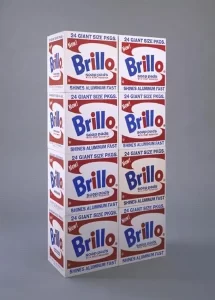
Andy Warhol’s “Brillo Box” blurs the distinction between art and everyday objects. Warhol was fascinated by the impact of art and design in even a mundane thing like the Brillo box packaging. The choice of a familiar, mass-produced object challenges traditional notions of artistic originality. Warhol’s “Brillo Box” is a commentary on consumerism, commodification, and the democratisation of art.
A Bigger Splash by David Hockney: The Californian Dream on Canvas

David Hockney’s “A Bigger Splash” captures the essence of 1960s California with sun-drenched pools and geometric modernist architecture. Hockney’s fascination with the Californian lifestyle is highlighted in the way he captured the play of light on water. “A Bigger Splash” becomes a frozen moment in time, inviting viewers into the glamorous world of Southern California and reflecting the pop art fascination with the visual language of mass media.
Red Jackie by Andy Warhol: The Iconic Tragedy
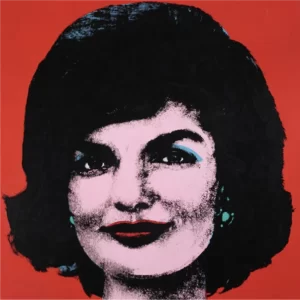
“Red Jackie” by Andy Warhol is a sombre yet powerful portrayal of Jacqueline Kennedy in the aftermath of President John F. Kennedy’s assassination. Warhol was deeply affected by the tragedy and sought to immortalise Jackie as both a public figure and a grieving widow. “Red Jackie” stands as a testament to Warhol’s ability to transform tragedy into art and elevate grief into something iconic.
LOVE sculpture by Robert Indiana: Love as a Universal Language
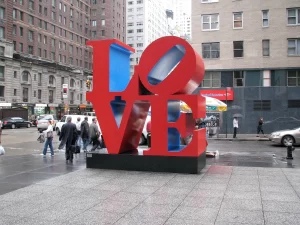
Robert Indiana’s “LOVE” sculpture has become a universal symbol of optimism and unity. Indiana was inspired by the 1960s counterculture and sought to create a visual expression of love as a powerful force. The iconic arrangement of the letters, with the “O” tilted at a playful angle, exudes a sense of joy and spontaneity. “LOVE” transcends cultural and linguistic boundaries, reminding viewers of the universal and timeless nature of love.
The stories behind each brushstroke and creative decision offer a glimpse into the minds of the artists who shaped the pop art movement. From the vibrant colour palettes of Warhol to the emotive expressions of Lichtenstein, each artwork contributes to the rich collection of pop art.
*Images from Wiki Commons







0 Comments